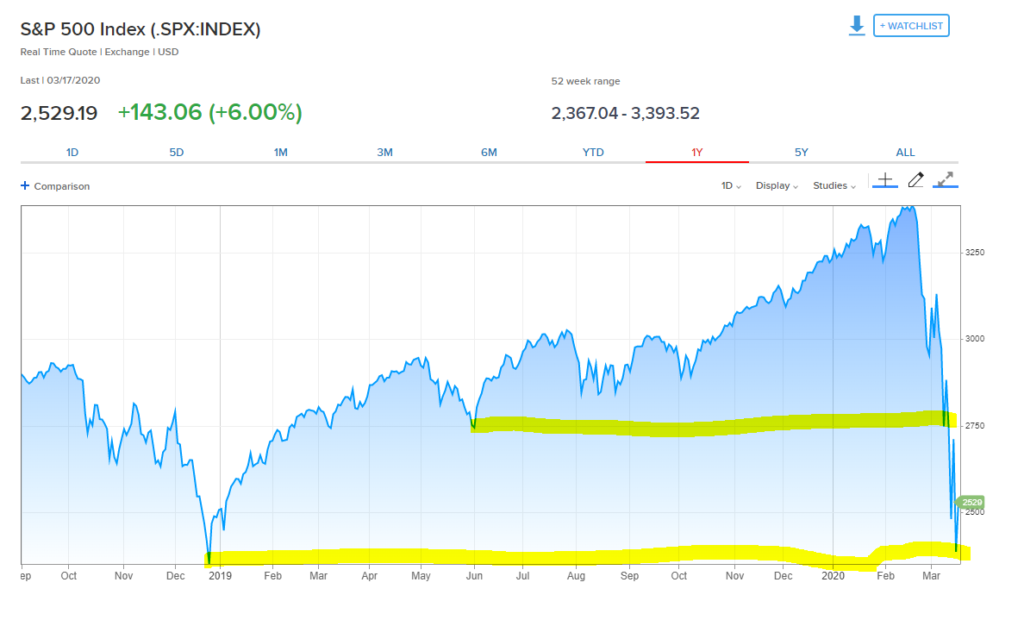You may remember prior posts when I talked about corrections being a process and part of that process is finding a bottom. We look for signals that suggest we are at or near the bottom. Here are three that offer some encouragement.
The market tends to find bottoms that align with previous market bottoms. Areas of prior support can provide support during a current move down. The chart below shows the S&P500 index going back to the fall of 2018. The upper line shows a market bottom in summer of 2019 and you can see that our current correction hit that level and bounced. While you can’t see individual days in this chart, we actually hit that level across several days. Unfortunately, that level didn’t hold and the market moved lower – to a level that represents the bottom from December 2018. We have hit that level several times over the last few days and bounced each time. We hit that level again this morning and bounced. Only time will tell if this is the bottom, but at least the market has some support at this level.

A second area suggesting support are a number of technical indicators (bullish percent, relative strength, and several others) that are at extremely low levels – levels that typically do not linger for long periods of time. If history holds true, markets tend to bottom around these levels and then begin the process of turning around.
Third, I receive an email each night that details the buying and selling of company insiders – executives, board members, and individuals/entities who own at least 10% of the company. This morning, the report detailed insiders buying stock in 75 different companies, compared with selling in only 6 companies. Yesterday the ratio was even more skewed – 134 companies where buying took place compared with selling in only 7. While no one is suggesting this event won’t impact companies at all, insider buying at these low levels tends to support my contention that this pullback does not represent a true indication of how corporate profits will be impacted in the coming year or two.
Lastly, I’ve had conversations with several clients about the dramatic increase in market volatility over the last 5 years or so. These increased market swings are likely the result of computer trading and an SEC rule change related to short-selling. My hope is that events like this one can bring pressure on the SEC to find ways to tamp down this kind of runaway volatility. If you are stuck at home with time on your hands, here is a link to a WSJ article discussing the issue.
If you have questions or would like to talk, please let me know.






